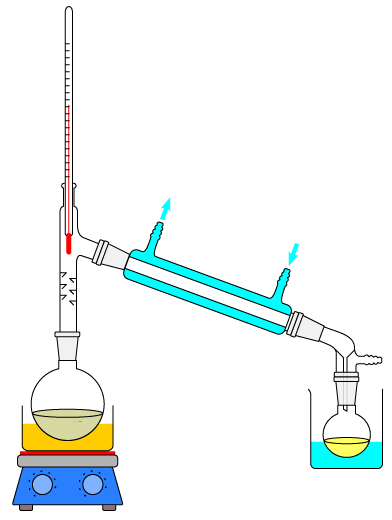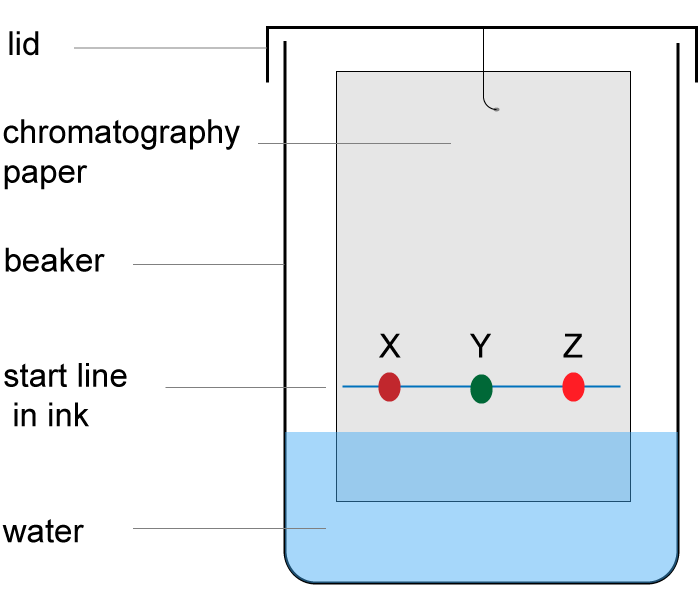Chemistry µGCSE:Separations
10 quick questions - for GCSE and iGCSE
10 minutes maximum! Can you do it in 5? |
|||||||||||||||||
|
Q1-3 refer to the following particle diagrams. Different atoms are represented by orange and blue circles.
Select the diagram which represents ... |
|||||||||||||||||
| 1. ...a mixture of gases. | |||||||||||||||||
| 2. ...a gaseous compound. | |||||||||||||||||
| 3. ...chlorine gas (Cl2) | |||||||||||||||||
|
|||||||||||||||||
| |||||||||||||||||
5. Which type of substance can be separated by filtration?
| |||||||||||||||||
| 6. This apparatus can be used to obtain pure water from sea water. |  |
||||||||||||||||
What is the name of the process shown?
|
|||||||||||||||||
Q7-9. Select the most suitable technique to obtain the first named substance from each of the following mixtures: | |||||||||||||||||
| 7. Chalk from a mixture of chalk and water. | |||||||||||||||||
| 8. Kerosene from crude oil. | |||||||||||||||||
| 9. Copper(II)sulfate from copper(II)sulfate solution. | |||||||||||||||||
10. A student investigated the colour in three different flowers X, Y and Z. He set up the apparatus as shown:
|
 |
||||||||||||||||
An error made by the student was he ...
| |||||||||||||||||